

Artificial intelligence (AI), no longer just a part of the sci-fi world, has become a reality and an integral part of our daily lives, especially in the business sector. In Hungary, more and more businesses are discovering the opportunities offered by AI, particularly because it can save time and energy.
According to a recent study by Billingo involving over 1000 businesses, the main goals of AI usage include information gathering, translation, data analysis, as well as supporting advertising and marketing activities. AI already provides a significant advantage in these sectors. For example, 66% of businesses use AI for information searching, 58% for translation, and 34% for data analysis. Common areas of AI application also include the creation of visual and graphic content, which 27% of respondents already use.
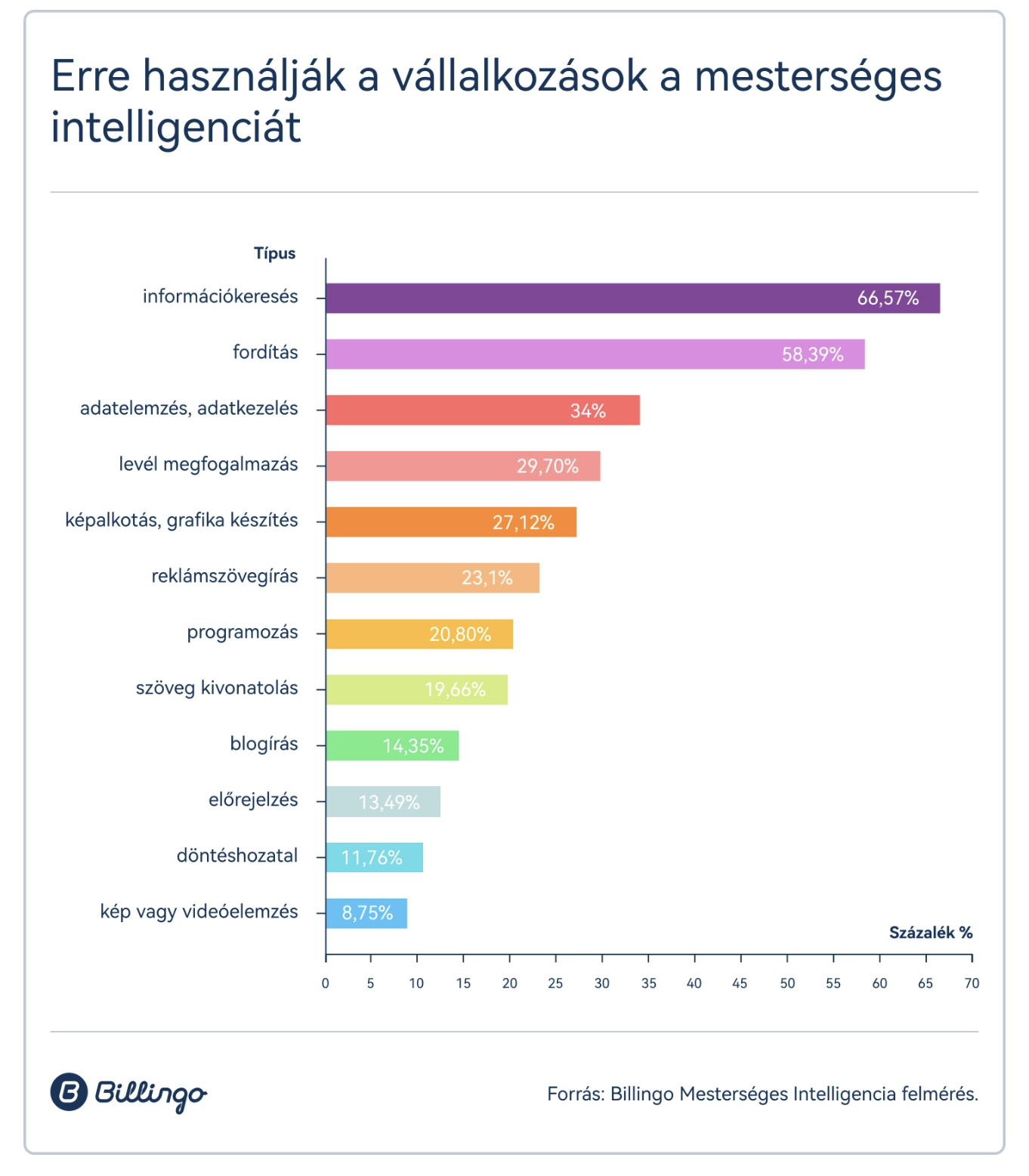
Source: billingo.hu
Hungarian businesses have thus started to integrate AI into their daily workflows, although they also have reservations about the new technology. Many are concerned about AI's transparency and controllability and fear it could be a tool for fake news or social manipulation. Despite these concerns, many entrepreneurs see opportunities in AI for automating administration, marketing, and customer service, with more industries discovering how useful AI can be for increasing efficiency and reducing costs.
To use artificial intelligence effectively, the method of "prompt engineering" is becoming increasingly important. But what exactly is prompt engineering? Imagine the AI as a super intelligent assistant that will only respond correctly if we ask it the right questions. Prompt engineering teaches us exactly this: how to give AI precise, clear instructions.
The essence of prompt engineering is learning what questions to ask the AI to receive the most relevant answers. Prompts should be clear and detailed, as the AI "interprets" our request based on the given prompt. For instance, a brief command might not yield an entirely satisfactory response, whereas a well-formulated, precise prompt can result in much more accurate outcomes.
Prompt engineering not only helps improve the quality of responses but also makes workflows more efficient, as AI can respond quickly and accurately. Therefore, more and more companies are seeking professionals skilled in crafting prompts for better results.
To better understand what prompt engineering is, let's see how a good prompt is structured. Consider a simple example: we want to create a social media post about the launch of a new product.
A general prompt might sound like this:
“Create a social media post about the launch of a new product.” In this case, AI would likely generate a basic post but may not include elements that are important to us.
A better prompt would look like this:
“You are an experienced social media manager. Please create a 4-6 sentence enthusiastic, friendly (but not pushy) social media post about the launch of [product name], highlighting its main benefits, such as [benefit 1], [benefit 2], and encourage followers to click on the [link] page. Build the post as follows: Include an introductory part in 2-3 sentences followed by bullet points detailing the different benefits, and at the end of the post, include a CTA with the previously provided link. Enrich the text with emojis that express its message.”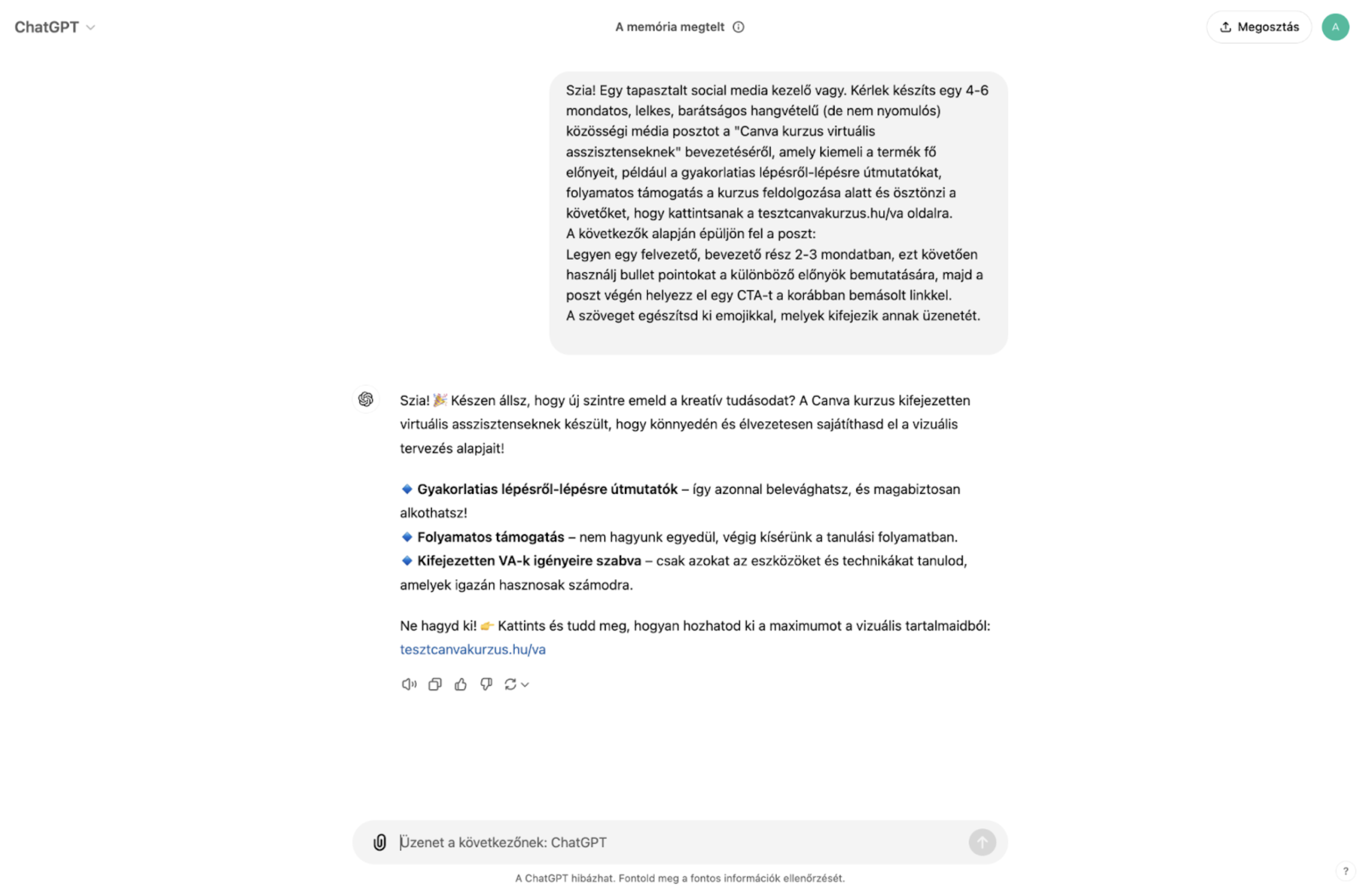
In this case, the AI provided a much more relevant and useful response since we specified how to craft the post in terms of style, length, and content. Could it be made even more precise? Of course! The essence is clear: the more information and instructions you give, the more detailed and perfect the outcome will be.
The types of prompts can also vary based on what you aim to achieve. Shorter prompts might suffice for quick information gathering, but more complex tasks like composing an entire advertising campaign require more detailed prompts. It’s worth learning and practicing how to formulate prompts to make the most of AI's capabilities.
Now let's look at some concrete examples of prompt types. As examples, we'll present a few simpler structured commands.
“Act as a social media expert (Role). Create a detailed content marketing strategy with content pillars (Task) in a 5-6 point list, providing 2-3 sentence explanations for each point (Format).”
“Launching a new product for a B2B software company (Context). Develop a comprehensive content marketing campaign plan (Action) to raise product awareness and generate at least 100 quality leads (Result). For example, similar campaigns have successfully used professional webinars, detailed case studies, and targeted LinkedIn ads (Example).”
+Tip: Try these commands to see how they perform for you.
Additionally, many more complex prompts exist, but if you are new to artificial intelligence, these are more than sufficient for starting points and practice.
Prompt engineering is essentially "training" for AI—when properly taught, AI can become a highly useful tool that saves both time and energy.
Content creation plays an increasingly vital role in business growth and strengthening online presence. The explosive development of AI technologies offers the possibility of making content production faster, more efficient, and easier. Below, we explore how these AI-based solutions can help in areas like blogging, social media posts, advertising, image generation, and video creation. Let's examine their benefits and potential drawbacks, and what to pay attention to!



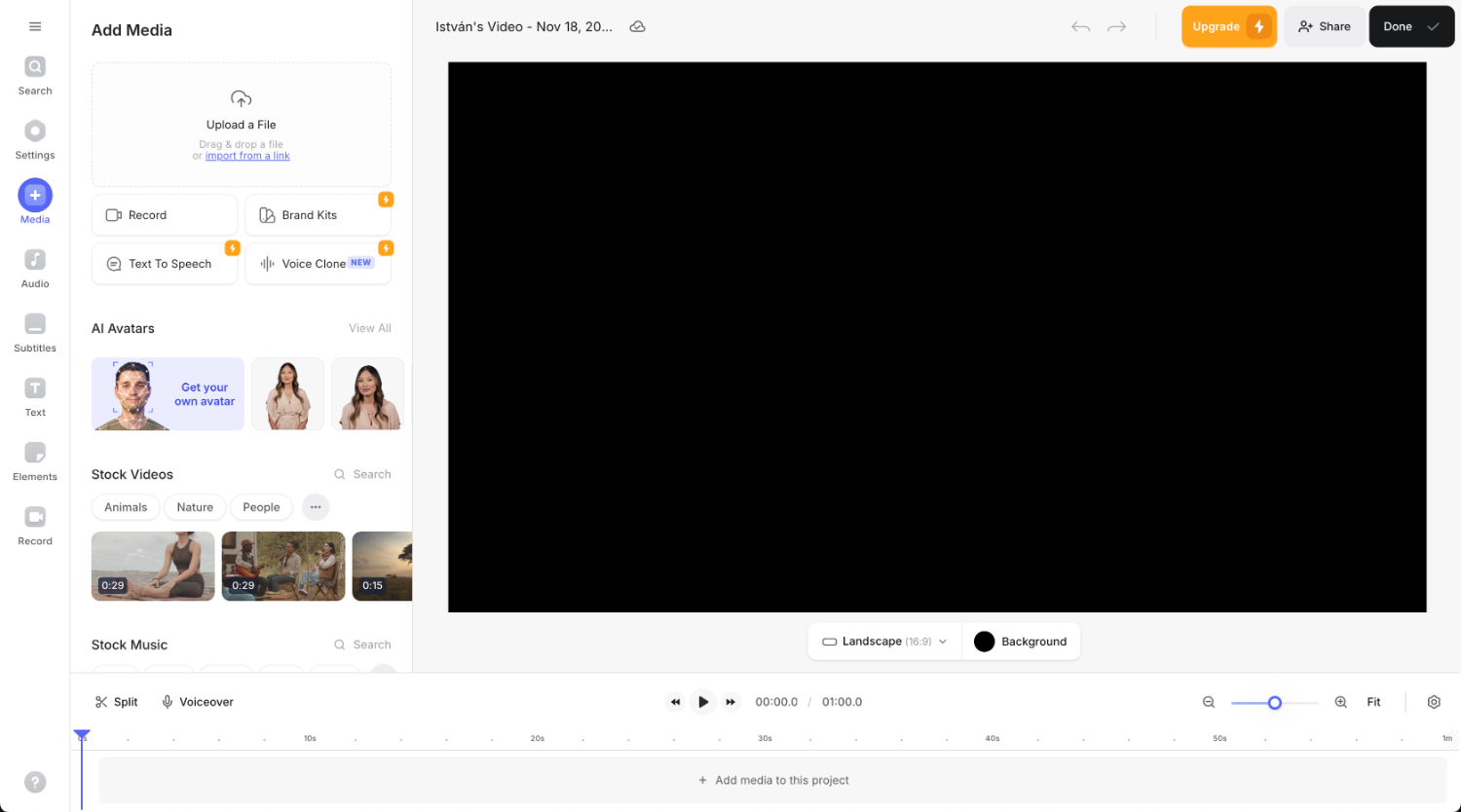
A well-written prompt for creating a social media post is structured and detailed, considering all important elements. Below are the precise steps that help in crafting a detailed prompt.
1. Define the goal
2. Target audience
3. Theme and content
4. Format and tools
5. Style and tone
6. Supplementary information

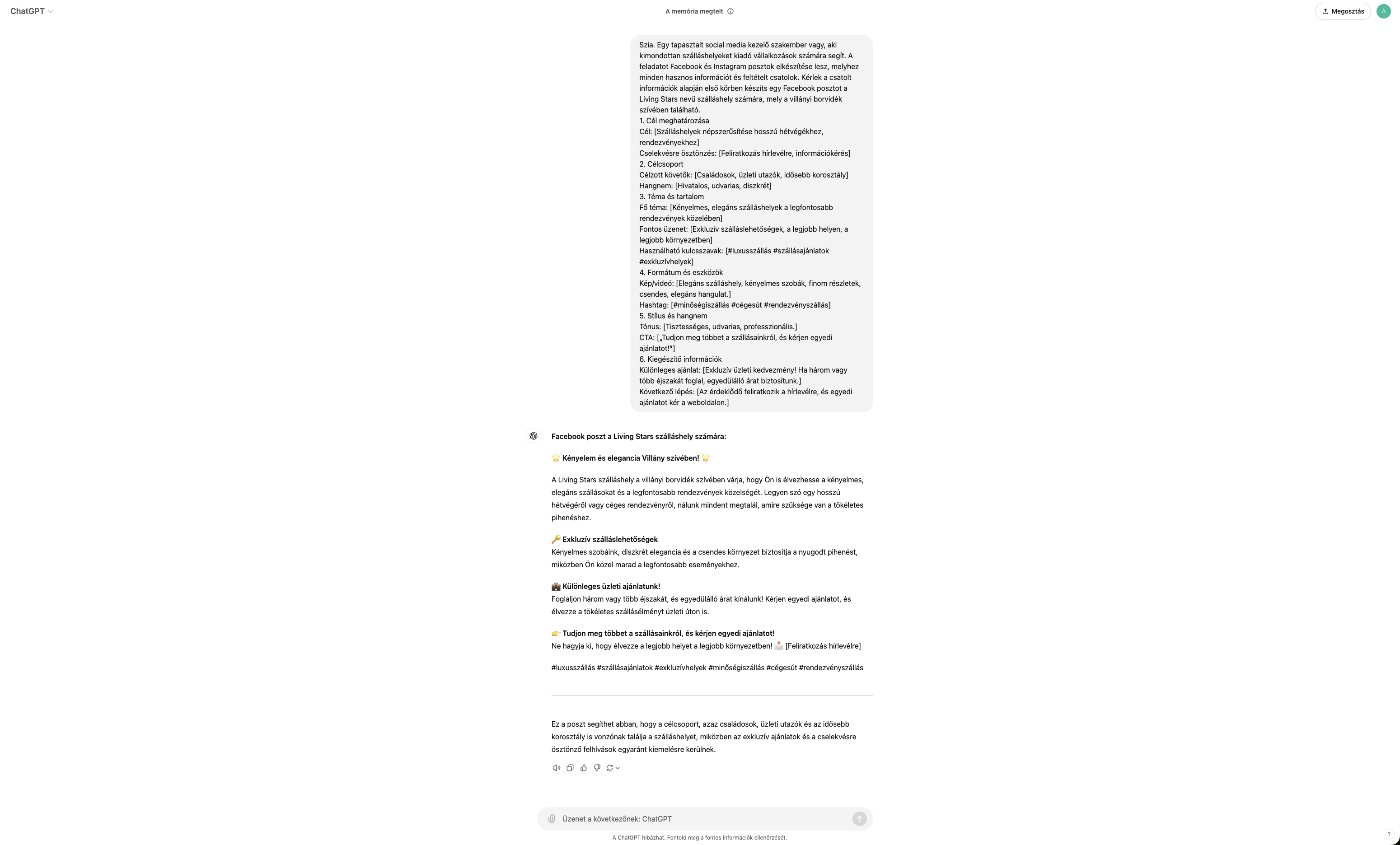
Administrative tasks are often time-consuming and monotonous, but fortunately, AI technologies can significantly reduce these burdens as well. AI is not only bringing revolutionary changes in content creation but also in performing administrative tasks. Below, we demonstrate how AI-based tools can help in data analysis, customer service, email responses, implementing chatbots, and translations.
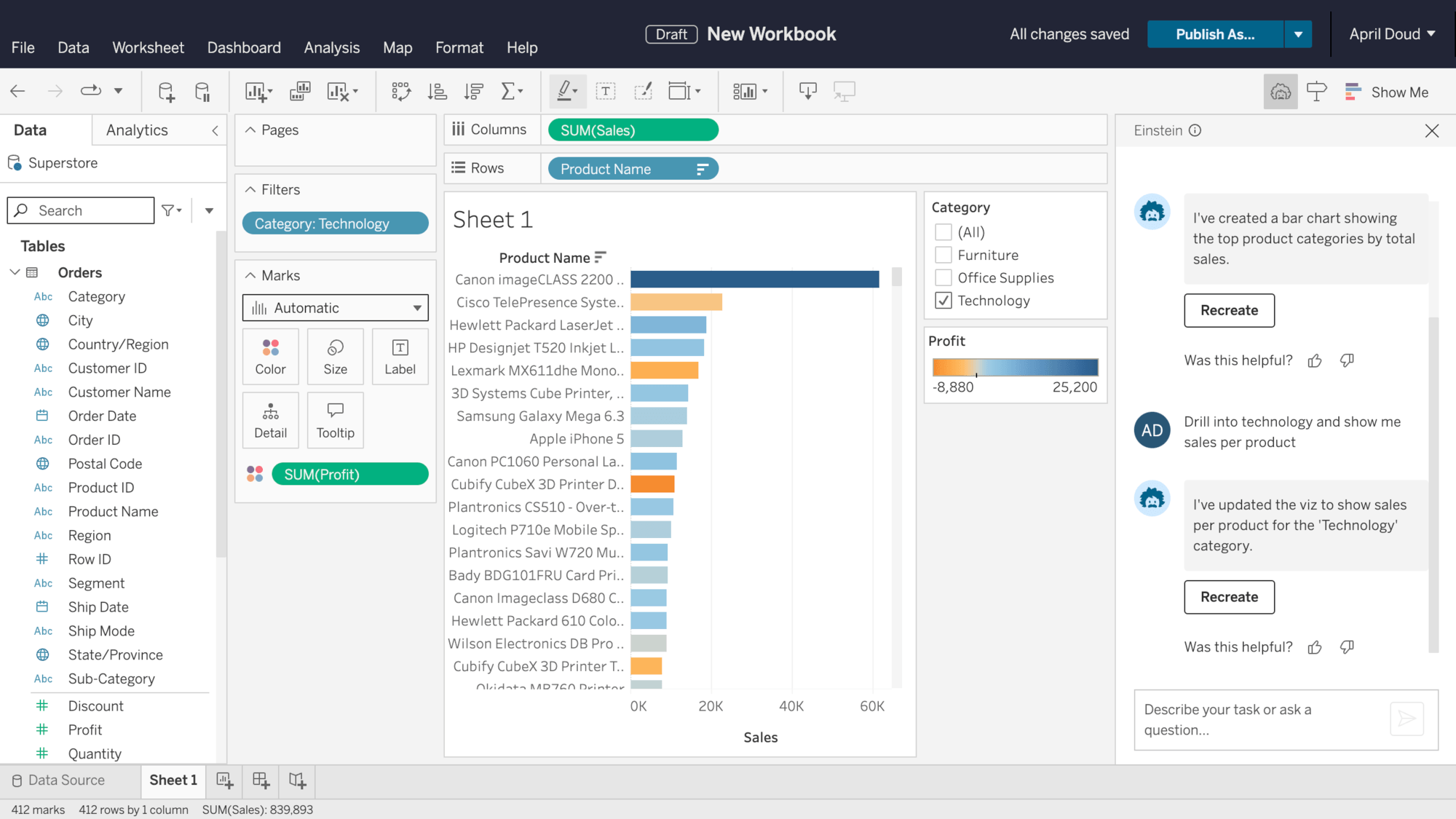




If you want to build a prompt for translation, it’s crucial to clearly and explicitly define the source and target language, while taking context and possible stylistic preferences into account.
Here is an example of how to construct a well-crafted translation prompt step-by-step.
1. Define the source and target language:
2. Request context or explanation if needed:
If the text contains technical terms, idiomatic phrases, or culturally specific elements, it’s advisable to request inclusion of these in the translation.
3. Break down into smaller units if the text is long or complex:
If the source text is long or complex, breaking it into smaller sections can make translation easier and more manageable.
4. Provide instructions for style and tone:
If there is a desired style to maintain in the translation (e.g., formal, friendly, business-like), mention it.
5. Request quality performance:
Emphasize the requirement for the translation to be accurate and natural rather than literal or overly mechanical.
Now is the opportunity to try translation in practice! Apply the guidelines outlined in the guide and create a natural, accurate translation that considers the text’s context and style.

AI is gaining an increasingly important role in the marketing world by assisting with market research, brainstorming, email marketing, campaign planning, and even defining the brand's voice. Due to the complexity of marketing processes, AI can ease all stages, from strategic planning to daily content production.
Now let’s look at three examples of how you can use AI in your marketing and how it can help optimize various specialties.
The brand's voice is crucial for communication, as all manifestations of your business (texts, adverts, social media posts) are based on this voice. AI, particularly ChatGPT and other language models, can easily help define your brand’s voice. During this process, you provide the AI with detailed brand information, such as:
Once these details are shared, ChatGPT can assist in precisely articulating the brand's voice, aiding the unification of all marketing communications. AI thus simplifies brand strategy development and unifies communication.
+Example:
“[Company Name] content generation template:
Please use this template to create [Content Type] that aligns with our
brand voice and effectively communicates our message to the target audience!”

AI becomes a key tool in campaign planning as well. During planning, it is crucial to clearly define the goal you want to achieve (e.g., increasing brand awareness, boosting sales), and AI helps develop creative ideas suited to this goal.
Let’s consider a sample prompt on how to approach campaign planning. The following command offers an excellent starting point but can be further detailed with additional instructions.
Example:
“You are an experienced marketing expert specializing in the [market]. Plan a 2-week social media campaign for launching a [product]. The target audience is [target audience characteristics]. The campaign should cover [Facebook, Instagram, and LinkedIn] platforms. Define the main messages, post types (e.g., image, video, story), posting frequency. Write hashtags too. Suggest interactive content elements (e.g., contests, questions) to engage followers. Provide ideas for influencer collaborations and paid ads.”
Marketing strategy planning is an essential part of successful campaign development, and AI provides effective support in this area as well. Defining buyer personas or detailed target audience profiles is crucial for reaching them with personalized, effective marketing communication.
● Buyer Persona Definition: With ChatGPT, you can create detailed buyer personas considering demographic data, interests, buying habits, and problems, ensuring that each campaign truly speaks to the right audience.
● Market Research: AI can rapidly and accurately conduct market research and analysis of competitors, helping us remain informed about market conditions. ChatGPT and Google Trends can discover trends, keywords, and popular topics to aid in precise and effective campaign planning.
● Strategic Planning: AI enables rapid adjustment of our marketing strategy based on the latest trends and market changes. Jasper.ai, for instance, can help pre-determine the best content forms and tools, and also optimize campaign timing based on regular data analysis.

Congratulations on reaching this point, full of valuable insights on using artificial intelligence to enhance your business. Now you've arrived at the next step, helping you truly harness the potential of ChatGPT and other AI tools.
We've compiled a variety of useful ChatGPT prompts specifically designed for entrepreneurs. These prompts can simplify daily tasks, support creative idea generation, assist in developing your marketing strategy, or even fine-tune communication with customers.
By downloading the collection, you gain a tool that helps elevate your business to the next level. Download now and leverage all the advantages AI offers for success!


